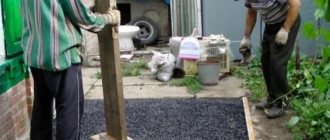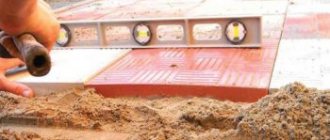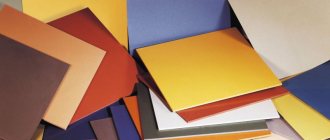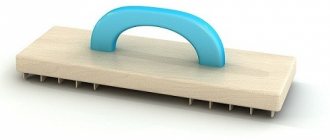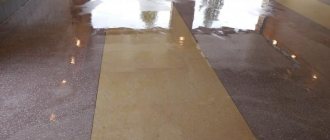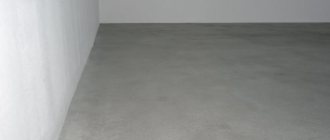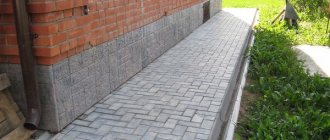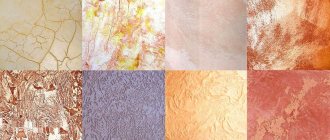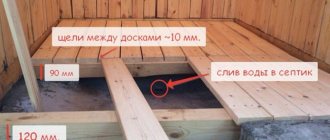Every person who decides to lay tiles with their own hands must first think about how and with what help to fix it on the surface. The main role of the mortar for ceramic tiles is the installation of a tile covering by fixing it to the floor or wall. It’s not at all difficult to prepare it yourself, at home.
The first thing you need to do is decide on the composition. There are two types of mortar for ceramic tiles:
- hand-made cement-adhesive mixture. It is a universal and most reliable material;
- ready-made dry mixtures sold in stores and markets. They are intended only for smooth, plastered surfaces made of concrete, brick, and wood.
The first option is the most popular. The composition of the cement-adhesive mixture does not depend on where the tile covering will be glued, on the floor or on the walls. To make it, it is advisable to use purified, coarse sand and cement. The higher the grade of cement, the better the quality of the solution, but in any case it should not be lower than 300. If you use cement of grade 300-400, then its ratio with sand will be 1:5, and if you take cement of grade 500-600 - then 1:6.
In order to achieve good adhesion of the surface to the solution, you can dilute it with PVA glue.
The sand used, if it is damp, must be dried, because wet will not pass through a fine sieve when sifting.
When purchasing cement, be sure to check the release date. If the expiration date has expired or is close to it, then it has probably lost half of its properties. If the purchased cement does not have packaging, then its suitability can be determined as follows: you need to take a handful of it and squeeze it, while the fresh one will come out between your fingers, and the expired one will clump into a lump.
Cement mortar
To produce a cement-adhesive mortar for ceramic tiles, the following technology is used:
- First of all, you need to sift the sand. If this is not done, then various pebbles, fragments of shells, pieces of clay that may be in it will fall into the solution and the tiles laid on it may subsequently crack;
- The sifted sand is mixed with cement in the above proportion, adding water until it is thick enough to resemble dough. After this, the solution is ready for use.
- To ensure good adhesion, you can pour PVA glue into it - 1/2 liter of glue is taken for 10 liters of solution.
An excellent replacement for the cement-adhesive mixture is a ready-made dry mixture (tile adhesive) purchased in a store. It consists of cement, sand and a huge number of various chemical additives that give it properties appropriate for its intended purpose. This mixture is subsequently used to make a mortar for ceramic tiles. The price usually depends on the manufacturer and the quality of its components.
Types of compositions
According to the release form, glue is classified into 2 categories:
- ready-made mixtures having a paste-like consistency;
- dry mixes.
Ready-made pastes are presented on the market in buckets of different sizes. They have a uniform consistency and benefit from reliable adhesion and minimal consumption. The price of tile adhesive in paste form is usually higher than dry mixtures, since the consumer buys a ready-to-use product.
Dry mixtures, which are usually based on cement, are sold in bags of various packaging. Such adhesives require preliminary preparation in accordance with the manufacturer's instructions.
Based on the material used, the following types are distinguished:
- cement;
- dispersive;
- epoxy;
- polyurethane.
Dry mixture solution
Working with such mixtures requires strict adherence to the instructions. The adhesive properties of ready-made suspensions are better, and they are also diluted with special antifungal additives. But all this is true only if the solution is made correctly:
- During work, be sure to protect the respiratory tract using a respirator or a gauze bandage;
- pour three liters of water at 22-24 C into a clean ten-liter bucket;
- Gradually pour the dry mixture into the water, stirring continuously. The finished volume should be approximately 2/3 of the bucket;
- Stir the mixture thoroughly so that no lumps remain. This can be done using a special whisk;
- to enhance adhesion, dilute the solution with PVA glue at the rate of 1/2 liter per 10 liters of composition;
- the finished solution must be allowed to stand for ten minutes and mixed again.
Types of ready-made dry mixes (tile adhesive)
- Universal mixture. It is most popular and is used for fixing small tiles. It is usually used to decorate rooms with ordinary tiles.
- Strengthened mixture. Its main purpose is to fix large tiles on the floor and walls. A characteristic feature of this type of mixture is that it provides good adhesion to the surface and high resistance to various types of loads.
- Pool mix. With its help, pools and baths are decorated with mosaic tiles. This mixture is moisture resistant and includes components that prevent the appearance of mold.
- Frost-resistant mixture. Designed for outdoor use. With its help, the plinths of buildings, stairs, terraces, etc. are covered with tiles. This mixture is resistant to repeated freezing and subsequent thawing.
These are the main types of ready-made dry mixtures from which mortar for ceramic tiles is made. Photos of them can be viewed on the Internet on the websites of enterprises selling building materials.
Epoxy mixtures
The adhesive includes 2 main components - epoxy resin and hardener. The substances are mixed before use. The hardener starts the polymerization process of the resin, making it stronger and more resistant to stress.
The advantage is high adhesion. This allows you to mount the tiles on wood or metal.
How to choose good quality ready-made dry mix
There are several criteria that you need to rely on when choosing a ready-made mixture:
- When purchasing a ready-made mixture, you should always check the expiration date and compliance with storage conditions. If they are violated, this material may partially or completely deteriorate;
- It is better not to purchase a mixture that was produced more than six months ago, because... it tends to cake and may subsequently become petrified;
- where and by whom the mixture was released also matters. There is a myth that says that when purchasing expensive materials, people overpay for the brand that is depicted on the packaging, but this judgment is far from the truth. Manufacturers who have been on the market for a long time, in order to stay afloat in conditions of fierce competition, constantly research the properties and compositions of mixtures, improving their products.
- When choosing the type of this material, you should not buy the same one for the walls and floor because... they will be subject to different loads. It’s better not to save money and purchase a reinforced mixture for the walls.
With the help of this guide, any beginner in renovation and construction will be able to independently prepare a solution for ceramic tiles. See the video below for more visual instructions.
Advice: despite the fact that the optimal composition of ingredients has already been selected for all mixtures, there are several additional additives that will make the glue even stronger. Manufacturers do not add them because it is not cost-effective and significantly complicates the production process. Such additional substances include PVA glue (added to the diluted mixture) and cement (above grade 50).
There are quite a lot of different companies represented on the dry mix market, but not all of them offer decent products. Among the time-tested and customer reviews are:
- Ceresit,
- Optirok (Vetonit),
- Atlas
- Sopro,
- Bolars,
- Eunice.
The most famous of all manufacturers is without a doubt the products of Ceresit. This brand is part of the Henkel concern, which also produces products under the Thomsit, Metylan and Moment brands. The main facilities are located in Ukraine, but the products fully comply with the requirements and technical standards. The assortment offers quite a lot of different compositions, which differ from each other in the composition and method of using the tiles. There are frost-resistant mixtures for outdoor use and various compositions for porcelain stoneware, thin tiles and other types of tiles.
The Finnish corporation Optirok offers the Vetonit product range to domestic consumers. Taking into account the harsh Finnish weather conditions, adhesive mixtures are made with an additional margin of strength, so Vetonit adhesives are suitable for use in all regions of Russia.
Polish Atlas is also of quite high quality, but costs less than its analogues. The company specializes specifically in adhesive mixtures, so it offers quite a lot of compositions designed for specific loads. This allows you to optimize the tile installation process to maximize its service life.
Sopro is a German company that has been repeatedly awarded at international construction competitions. Of course, the quality of its products is at the highest level, and therefore domestic distributors significantly inflate the cost of the goods. It makes sense to choose this company if a large amount of work is required and a wholesale purchase is possible. Then the price will be acceptable.
Of the domestic companies, Bolars and Yunis are worthy of attention. Both companies have their own factories in Russia. The products comply with GOST. Since there are no costs for customs clearance and delivery, the products of these manufacturers are cheaper. But a little experience in this industry allows us to recommend companies exclusively for interior work on tiling walls. Also, it should be added that the Moscow company Yunis does not yet have a wide network of distributors, therefore it is available only to residents of the Moscow region.
Several of the main elements that are used in ceramic tiling are the mixture and crosses for laying tiles. And the mixture becomes quite an interesting point, since there are a number of its varieties, and in addition, you can use both a regular solution and special adhesive compositions.
Tile mixture and its features
When deciding on cladding with tiles, the first step is finishing the walls. For these elements, you can use ordinary mortar, which is made on the basis of sand and cement, as well as ready-made adhesive compositions.
Ready-made glue can be sold either in the form of a mixture already prepared for use, or in the form of a powdered material, which additionally needs to be diluted. The mixtures are prepared strictly according to the instructions on the packaging.
Ready-made dry compositions are cement with the addition of a special modifying substance. Usually found in packages of 5 or 25 kg.
Some nuances
When considering the floor covering, it should be noted that it is large, in contrast to the walls, which exceeds 3 mm. And therefore, what kind of solution is needed for the tiles will be determined by several factors.
- First of all, the evenness of the base. Because in the presence of unevenness, it is advisable to use cement mortar, which will not only serve as glue, but also help smooth out the unevenness. In this case, the thickness of the solution layer can reach 3 cm. In turn, the use of ready-made adhesive mixtures requires a perfectly flat surface.
- The type of tile also becomes an important factor. Considering, for example, porcelain stoneware, this material has low adhesion, therefore the mixture for laying tiles of this type must contain special plasticizers that improve this indicator.
- The human factor, or more precisely, the economic factor, also has an impact. Since a self-prepared mixture is cheaper than a ready-made one, if everything indicates the possibility of using a standard cement mortar, then it is better to use it.
Speaking, by the way, about the issue of saving, there are also several factors here:
- When finishing a cement base, slightly more mortar will be spent than when laying it on concrete.
- There is also another factor regarding tiles. In particular, a glazed one will require less solution than an unglazed one.
Consumption rates
The average consumption of the Plitonit mixture per 1 m2 is 1.7-5 kg.
A number of factors influence the consumption rate.
- Tile size. The larger it is, the thicker the layer of glue required.
- Tile material. Ceramics absorb less solution than tiles.
- The degree of preparedness of the base and evenness. Deformed surfaces require applying a larger layer of solution.
- Application method. Application with a notched trowel is more economical compared to the continuous application method.
- Master's experience. Beginning builders spend more mortar per 1 m2 and apply it in an uneven or too thick layer.
For gluing 1 sq. m. a small tile 10x10 cm will require 1.7 kg of mortar, and a large tile measuring 30x30 cm with seams of 2-3 mm will require up to 5 kg/m2.
To calculate the required volume of the mixture, multiply the consumption by the area of the base to be pasted.
Structure and composition
When considering ready-made adhesive for laying tiles on the floor, it is almost impossible to fully know the composition, since this is a manufacturer’s secret. The big advantage of such mixtures is that they are divided into different types, designed for different operating conditions and surfaces. Thus we can distinguish:
- Universal glue. Used under standard conditions on flat surfaces.
- Reinforced, which is often used when laying fragile tiles.
- Non-traditional compositions intended, for example, for glass or metal tiles.
At the same time, the standard composition of cement mortar is known to everyone. It also adds cement and sand in different proportions depending on the brand of the first element. In particular:
- With M300 cement – 3 parts sand.
- For M400 – 4 parts of sand.
- For M500 or M600 – 5 parts.
The sand itself must be sifted, which is done to remove debris and clay.
If it is necessary to strengthen adhesion, standard PVA glue is also added. It is added in a proportion of 1 to 50, where the first value is the proportion of glue, and the second is the proportion of the total amount of the mixture. To put it more clearly, 200 g of glue is added to 10 liters of solution.
Also, when laying tiles, tile adhesive does not always meet the requirements for elasticity and water resistance.
In some cases, detergents can be used to increase elasticity. For example, liquid soap, shampoo or diluted powder.
If it is necessary to improve frost resistance, then special additives are used for this, for example, Primer EC-30. It is a universal hardening accelerator, which, accordingly, imparts resistance to low temperatures.
Cement adhesives
Cement-based tile adhesive is available on the market in bags and has a powdery consistency. The composition includes Portland cement, fine sand and additives to improve performance properties. The share of additives does not exceed 5% of the total volume.
Sand is added to increase strength and reduce weight, and hence the load on the surface being treated. Additives are divided into several types depending on their functions:
- plasticizers. Make the glue more fluid and flexible;
- moisture-retaining. The solution retains water longer and is more durable. Also affect thermal insulation characteristics;
- anti-frost. Allows the use of glue in cold weather and when performing outdoor work.
Cement-based mixtures are divided into 2 types:
- for thin layers;
- for thick layers.
The maximum difference in height of the treated surface when using thin-layer solutions can be 1 cm.
In the case of thick-layer mortars, this parameter increases to 3 cm. The composition includes cement and polymer additives that increase strength characteristics.
Preparation of the solution
Now it is necessary to consider the preparation of both a ready-made composition and one made independently.
Ready dry mix
Let's start with the finished mixture. In this case, the first thing you need to do is carefully read the instructions, which are usually found on the packaging. In some cases it is additionally included.
The main thing is not to pour water into the dry mixture, but do the opposite
. Otherwise, lumps will remain, which will affect the quality. The cooking process itself is as follows:
Water temperature becomes an important factor. It should not be cold, warm or hot. The liquid is used strictly at room temperature. Otherwise, the components of the composition may lose their properties. The immediate temperature in the room during work should be in the range from 10 to 24 degrees.
At the recommended temperature, the mixture for floor tiles hardens quite quickly, so large batches are not recommended. It is advisable to prepare as much glue as you can use within 30-40 minutes.
As you know, tiles are often soaked before laying, and the base itself is moistened. It is not recommended to do this when laying with glue.
Homemade cement mortar
In the case when you choose a self-prepared solution rather than adhesive for laying tiles on the floor, you need to clearly know how to prepare it, which we will talk about next.
Preparation proceeds as follows:
The tiles should be immersed in water for 8-10 hours before such installation. Just start by soaking one tile, because if you come across poor quality material, you will end up with ugly yellow spots under the enamel, which will ruin the whole look of the room.
If, after soaking and laying on cement, the sample has not lost its appearance, then the entire tile is soaked. If soaking is not possible, then immediately before laying it is necessary to wipe the back side with a damp cloth.
When laying floor tiles using homemade tile adhesive is done on a concrete base, the work is somewhat simplified. In this case, a sufficient process will be to pour water onto the surface and pour cement through a sieve. Next, the tiles are laid on the resulting “dough”.
Most common mistakes
Quite often, when you plan to quickly lay tiles, a number of mistakes are made when preparing the mortar:
- Often you come across low quality sand, not sifted and not dried, and in a hurry this is what is used.
- It is also an unacceptable mistake to use old cement, which often loses its properties.
- Only clean water should be used; in no case should sea water or dirty, settled water be used.
- The mixture must be thoroughly mixed so that no lumps remain, which entails a loss of quality.
- It is also a mistake to lay tiles with increased requirements (for example, porcelain stoneware) using a standard adhesive mixture or cement mortar.
This was a series of mistakes when using cement mortar, now let’s look at the use of ready-made compositions:
- The use of cold or hot water is strictly prohibited.
- You cannot add the mixture first and then add water, otherwise lumps will form.
- Do not soak the tiles or wet the base.
- Containers for preparation must be clean, after each batch they must be cleaned and washed.
- The mixture must be stirred at a low speed of rotation of the mixer. At high speed the mixture will foam, at low speed there will be lumps.
And finally, a little advice, if you plan to lay tiles on tiles, our article on this topic will help you decide.
Tile adhesive is a composition of cement, sand, chemical additives and a plasticizer. It is designed for gluing mosaic, ceramic and other tiles. From the moment the composition of tile adhesive for external and internal work appeared in the form of specialized dry mixtures, the speed and quality of finishing have increased many times over. Tile adhesive is usually heat-resistant and is characterized by high load resistance, elasticity, adhesion to surfaces, moisture resistance, etc. One of the most important advantages of the tile adhesive composition is low consumption and high degree of retention of tiles, natural stone, gypsum boards, etc.
[Click on photo to enlarge]
Tile adhesive is a composition of cement, sand, chemical additives and a plasticizer. It is designed for gluing mosaic, ceramic and other tiles. From the moment the composition of tile adhesive for external and internal work appeared in the form of specialized dry mixtures, the speed and quality of finishing have increased many times over. Tile adhesive is usually heat-resistant and is characterized by high load resistance, elasticity, adhesion to surfaces, moisture resistance, etc. One of the most important advantages of the tile adhesive composition is low consumption and high degree of retention of tiles, natural stone, gypsum boards, etc.
Technologies
Polyurethane adhesive - application features
Polyurethane adhesives are synthetic adhesives that are obtained from substances used to synthesize polyurethanes. Polyurethanes are polymers that are film-forming substances that have increased resistance to gasoline, acids, oils and other aggressive substances
How to choose heat-resistant tile adhesive
Using heat-resistant tile adhesive, ceramic clinker tiles, insulating materials, concrete blocks, natural stone, glass, mosaic panels, and wooden panels are laid
Frost-resistant tile adhesive for outdoor use. Description and Application
Frost-resistant tile adhesive is not afraid of temperature differences, does not deform, has high strength and a high degree of adhesion
Ready-made tile adhesive: application features
When working with ready-made adhesives, complex and messy work on diluting mixtures is not required; laying ready-made tiles on tile adhesive is easy and simple
Two-component tile adhesive. Features of use
Polyurethane two-component adhesives are used for gluing PVC tiles, ceramics, earthenware, concrete, metal, wood, polystyrene on absorbent and non-absorbent substrates, also on industrial and sports floors
In this article:
Glue is a substance that is used in the household and in almost all areas of production. The reason for such popularity of adhesives is the ability to connect objects that are different in shape, composition and not the same in size. Modern types of adhesives provide high reliability of the connection and aesthetics.
Due to the huge scope of use of adhesives in the household, there are very often cases when glue is urgently needed, but it is not available. And then many people wonder how to make glue at home?
So let’s look at how to make different types of adhesives at home.
How to make PVA glue at home
In order to prepare PVA glue with your own hands, you need to select the following ingredients:
- glycerin – 4 grams;
- wheat flour – 100 grams;
- distilled water – 1 liter;
- ethyl alcohol – 20 ml;
- photographic gelatin – 5 grams.
Some of these raw materials are always available at home, and the rest you can buy at the pharmacy. Before preparing the glue, you need to soak the gelatin in plain water a day before.
When the gelatin has already infused, you need to build a water bath from kitchen utensils. Place all raw ingredients, not including alcohol and glycerin, in a container and cook in a water bath.
Stir the resulting mixture constantly and wait until it reaches the desired consistency (thick).
When the mass has become thick, you can add ethyl alcohol and glycerin to it. Next, you need to thoroughly stir the mass until there are no inhomogeneities in it. After the mass has become homogeneous, you can stop the process of preparing the glue. You can use homemade PVA glue as soon as it cools down.
DIY wood glue
Quite often in the household it is necessary to glue wood, cardboard or paper. And then it is best to prepare wood glue at home. To prepare it you need a tile of wood glue. Before directly preparing the glue, you need to break the tiles into small pieces and place them in a container. Next, you need to fill the pieces of tile with cold water, wait 10-12 hours until the glue absorbs the water and forms a gelatinous mass.
After this, the container with glue must be placed in a water bath and stirred constantly so that it does not burn. If you need wood glue of a thin consistency, then it would be advisable to add hot water to the mixture. There is no need to bring the glue to a boil; when there are no lumps in it, it means it is ready.
If you need to glue the leather together with wood glue, then you need to add glycerin to the prepared mass. Calculation: 1 teaspoon per 0.5 liter of glue.
Features of preparing tile adhesive at home
If you have already purchased facing tiles and want to work, then you need to prepare tile adhesive with your own hands. As a rule, the adhesive mixture is prepared from cement and sand, water and PVA glue. Sand acts as a filler and should be small in size, the maximum diameter of a grain is no more than 2 millimeters.
The ratio of cement and sand should be 1:3. In this case, the measure is not the weight of the materials, but their volume. For example, 2 buckets of cement require 6 buckets of sand.
It must be remembered that tile adhesive hardens quickly and must be prepared immediately before laying the facing tiles. The tile adhesive solution can be used for no more than three hours.
Making glue at home is carried out in the following sequence of actions:
- Cement and sand are thoroughly mixed.
- Then water is added to the resulting mixture, having previously dissolved PVA glue in it. A bucket of tile adhesive requires 0.5 kg of adhesive. If the tiling work will be carried out in a room with high humidity, for example in a bathroom, then the volume of glue can increase and reach a maximum of 3 kg.
- Then the tile adhesive is thoroughly mixed, its consistency should be thick. If the mass has become homogeneous, it means that the glue is ready for use.
The bonding strength of homemade tile adhesive is quite high, but is inferior to industrial analogues.
Description and characteristics of tile adhesive plus and ms5
CJSC Mansurovskoye Quarry Management is a well-known construction and industrial complex of a wide profile. The company produces building materials in a full cycle, starting with the extraction of minerals and ending with the supply of finished products to customers. Every year MKU mines and processes more than 2 million tons of sand and crushed stone. The manufacturer's products, including tile adhesive, have proven themselves in the capital's construction market due to their high quality.
Advantages of cooperation with MKU:
- reliability of cooperation;
- short deadlines for fulfilling contractual obligations;
- product compliance with GOST standards;
- certificates for sold building materials;
- flexibility of pricing policy;
- prompt delivery.
Application area
Universal tile adhesive can be used for laying all types of floor and wall tiles, mosaic and ceramic tiles. You can buy tile adhesive if there is a need to tile a building above the base or carry out tiling work in rooms with high humidity: it is ideal for tiling kitchens, bathrooms, hallways, and balconies.
The adhesive is also suitable for laying foam blocks and aerated concrete, gluing porcelain stoneware, natural stone, marble and other facing materials. It is also recommended for finishing heated floors.
Compound
The composition of tile adhesive includes:
- high-quality Portland cement PC 500 D 20 and PC 400 D 0;
- dry fractionated sand 0.1mm - 0.5mm;
- mineral powder;
- plasticizers are chemical additives.
Advantages
Advantages of tile adhesive Plus -
- price :
- good ductility;
- the tiles do not slip;
- wide scope of application;
- It is possible to lay the cladding using top-down technology.
How to work with tile adhesive
First you need to prepare the base. It should be dense, not loose and previously cleaned of dirt, dust, oils, old paint, and rust. The crumbling layers must be removed and large uneven areas leveled. Moisture-absorbing substrates: gas and foam concrete, gypsum plaster must be primed. Horizontal and vertical deviations should be no more than 1 mm per meter of length.
To prepare the working solution, you need to prepare tools and clean containers. Pure tap water at room temperature is poured into the container. The dry mixture is poured with constant stirring into a basin or bucket of water ( tile adhesive consumption : for 10 kilograms of dry mixture there should be about two liters of liquid). Mix everything at once with a construction mixer or electric drill with a mixing attachment at low speed until an even, homogeneous mass is obtained. The solution should stand for 5 minutes. Then repeated short-term mixing is performed. If a drill is not available, you can mix the mixture manually, but in this case the amount of the prepared mixture should not exceed 1 kg. You cannot dilute the mixture with water a second time; if it seems too thick, it will lose its properties.
Each time you need to prepare as much of the mixture as you can produce within 2-3 hours. Otherwise, the over-sifted mixture will lose its plasticity and vitality and will begin to harden and turn to stone.
You can work with tile adhesive in a temperature range from +5 degrees to +30 degrees. The solution is applied to the surface to be coated with a smooth trowel up to one and a half centimeters thick and leveled with a wide notched trowel. The tile is applied and pressed onto the freshly applied adhesive mixture. The inner surface of the tile must be completely adjacent to the base treated with glue so that no air bubbles remain. The glue is applied at a time to an area that can be covered by a craftsman in 15 minutes. Adjustments to the tiles and cleaning of their surface can be carried out within 10 minutes after installation.
After 24 hours, the joints are grouted with special grouts. When working with a floor, you can start using it only after 24 hours. The adhesive strength of the set mortar is 5 kg per cubic centimeter. Tile adhesive for exterior use can withstand up to 35 freezing cycles without changing its technical characteristics.
The standard consumption of tile adhesive is 25 kg : approximately 5 liters of water are required per bag. However, when calculating the consumption of tile adhesive per 1 m2 , you should take into account the type of facing material. For example, for laying 30x30 tiles, the consumption increases to 1.9 kg per square meter. And for 10 square meters of tiles you need 19 kg of dry mixture.
Depending on the size of the facing material, the thickness of the applied layer will also vary. When working with old, uneven surfaces, it is necessary to take a little more than the calculated amount of material per square meter to level and fill cracks and depressions.
Conclusion
We can say that tile adhesive with a volume of 25 kg, the price of which is affordable and low, has all the properties necessary for good quality products. The MKU company guarantees high quality, excellent strength and performance characteristics of the presented dry mixture. Buy MKU tile adhesive from us at an inexpensive price and save without sacrificing quality.
How to make casein glue at home
If casein powder is available
According to its properties, casein glue
similar to carpenter's adhesive, but it is not afraid of moisture. Making casein glue with your own hands is quite simple. To prepare it, you need a flat container, casein powder, borax and water. First, casein powder is poured with water and allowed to brew for three hours. Then the borax must be dissolved in hot water in a ratio of 1:7. The resulting solution is added to casein. This mixture is heated in a water bath to 70 ° C and stirred constantly. The glue can be used 40 minutes after it is removed from the water bath.
If you do not have casein powder, then you can prepare it yourself.
How to make casein glue from milk
To prepare casein powder, you need skim milk. The milk is placed in a warm place to sour and then filtered using cotton wool or blotting paper. Next, the casein remaining on the paper is washed in water and boiled. Finally, the casein must be spread out on paper and dried at room temperature.
After preparing the casein powder, you can begin to produce glue. To prepare the glue you need borax, water and casein powder in a ratio of 1:4:10. Next, mix the raw ingredients, but first add half the water. Then add the remaining water to the resulting thick consistency and mix everything thoroughly. Casein glue must be used immediately; it hardens after 3 hours.
How to make waterproof glue
Quite often, households need glue that is not afraid of dampness. This type of glue is usually called waterproof
. Waterproof glue is used for tiling work in kitchens and bathrooms. This type of glue can be purchased ready-made, or you can prepare it yourself at home.
There are several ways to produce glue at home:
1. The first method of preparing glue requires cottage cheese or curdled milk, slaked lime. These two components are mixed until a thick, homogeneous mass is obtained. After this, the glue is ready for use, but you must remember that after applying the substance to the surfaces, you need to carefully compress and dry them.
2. Adhering to the second method of making glue, you need to purchase 100 grams of high-quality wood glue, 35 grams of drying oil. Wood glue is placed in a glass and simmered over low heat until it becomes liquid. Then add drying oil and stir the mixture thoroughly. This glue must always be warmed before use. This DIY hot glue perfectly connects wooden surfaces, is used when laying tiles, and is not afraid of either cold or hot water.
Knowing how to prepare various types of adhesives at home, you can always complete all household work efficiently and on time, creating a cozy and pleasant atmosphere.
According to tradition, a man must build a house or at least make repairs. Renovating a bathroom, as well as often a toilet and kitchen, cannot be done without the use of tiles. The tile itself will not stick, and therefore any man will need knowledge on how to independently prepare tile adhesive.
Before starting work, you should pay attention to the wall or floor. Uneven walls with cracks and old glue are not suitable for repair work; the surface must be smooth and free of previous coating. The same requirements apply to the floor. If there is wallpaper or newspapers hanging on the wall, they must be removed.
To fill the cracks, putty should be used, and after leveling, it is recommended to treat the wall with a primer.
If the tiles will be laid on the bottom, then the floor mixture should be applied to the floor, cleaned of all excess. Instructions are present on packages of tile adhesive of such well-known brands as Ceresit, Yunis, Plitonit or Moment. These are well-known companies that care not only about the quality of their products, but also about their customers. The applied primer or floor mixture needs to sit for a day, only the next day you can prepare and apply it. There should not be any difficulties when diluting the glue, but there are some nuances. For example, Yunis advises using only a clean container and tools, and Moment suggests keeping the mixture for 3 minutes (other manufacturers indicate a time of 5 minutes).
The process of diluting tile adhesive consists of the following steps:
- Take a clean container in which the mixture will be prepared.
- Tap water is poured, the temperature of which should be from +15 to +20 ᵒC, that is, room temperature.
- The volume of water corresponds to the volume indicated on the packaging (the proportions vary for each manufacturer, so you should rely on the numbers indicated on the packaging of a particular company).
- The mixture is gradually poured into the water, the resulting mass is constantly stirred for 3-5 minutes (kneading by hand is quite difficult, so it is better to use a mixer with a nozzle rotation speed of 600 rpm).
- As soon as the solution has become a homogeneous mass, it should stand for 5 minutes, after which it is mixed again.
- The prepared tile adhesive is suitable for use within 3-4 hours (due to the limited shelf life of the adhesive, the volume of preparation should be taken into account so that there is no situation in which there is too much unused material).
You can check the readiness of the glue as follows: use a spatula to take a small amount of the finished mixture, then turn it over; the prepared solution should not drain, its thickness should be enough to hold on for some time and then fall into a dense lump. There are situations when there is no mortar at hand or the financial situation is unfavorable, and glue needs to be prepared because there is a need to lay tiles. A seemingly hopeless situation has a way out.
Supplements
When making an adhesive solution for tiles, in addition to (or instead of) PVA, CMC and detergents, you can add special additives such as: MasterTherm, superplasticizer - C3, liquid glass, dibutyl phthalate, resin additive DEG1, superplasticizer D5, etc.
They will give the glue such unique properties as: frost resistance, heat resistance, moisture resistance, resistance to chemicals, plasticity, increased adhesion, etc. The method of using these additives will be described in the instructions supplied by the manufacturer.
And finally. To understand whether the adhesive composition prepared by yourself is ready for use, it must be applied to the tile, and if the tile moves freely along the floor in any direction, then the adhesive can be considered ready.
When laying ceramic tiles, you should read many nuances, regardless of what surface it is laid on. But one of the main points of the process is the competent choice of solution and its correct preparation. After all, even if they laid it perfectly, if low-quality glue was used, then all efforts can go down the drain.
Note! If you do not want to make tile adhesive with your own hands, proportions
are given below, then you can stop reading further and buy a ready-made solution (of good quality, of course).
Rules for diluting tile adhesive with your own hands
At home, replacing the finished mixture with a homemade one is easy. The necessary components are currently available to anyone who decides to prepare their own glue. The result of the work will be a mixture suitable for both ceramic tiles, including tiles, and decorative stone.
Thus, homemade glue has a number of advantages:
- Cost-effective;
- Versatility in use;
- Relative ease of preparation (no need to maintain temperature conditions).
Despite the fact that such a mixture saves money and can be used on different surfaces, and preparation does not require a certain temperature of the components, there is a certain complexity.
The difficulty lies in choosing the proportions for the solution.
A mixture purchased in a store has all the necessary information on the packaging, whereas you will have to prepare it yourself by eye. An error in this case will lead to a deterioration in the adhesion of the tiles to the glue, that is, the quality of the resulting material will be much lower than the quality of the composition of such companies, for example, as Plitonit or Yunis.
Polyurethane tile adhesive
Compared to the previous ones, they are more elastic. Suitable for gluing different types of surfaces together, for example, metal and glass. A good solution for laying tiles in hard-to-reach places, including those with complex geometry. The composition can be one- or two-component.
The former harden under the influence of moisture in the surrounding air. Two-component, by analogy with epoxy compositions, involve mixing two components. Polyurethane adhesives, which have the property of expansion during polymerization, cannot be used for tiles.
Finishing putty: types, application technique and characteristics. Tips for choosing the best compositionKnauf plaster - characteristics, properties, types, applications and mixing of the mixture (105 photos)
Do-it-yourself floor screed: types, construction technology and advice on choosing materials and tools. Video instructions and 110 photos from professionals
In modern construction, cement-based adhesives are usually used. This is the best choice in terms of price/quality.
Recipe for making tile adhesive
The presence of cement and sand does not raise any questions; the plasticizer, in turn, should give the solution the necessary elasticity. The plasticizer also adds the necessary frost and water resistance to the glue. Similar properties are useful when tiling a swimming pool or bathroom.
The composition of store-bought glue, without details of the chemical composition, includes
- Cement;
- Necessary additives (minerals and polymers);
- Sand;
- Plasticizer.
Despite the fact that the plasticizer is usually included in the mixture, it is possible to buy it separately. A separately purchased plasticizer is used instead of water, or it can be mixed with water in a ratio of 50% to 50%. The resulting consistency has enhanced properties compared to a mixture prepared entirely with water.
Sand in the glue recipe is used dry. It must be sifted so that there are no lumps.
Only river sand is used in the mixtures. Some manufacturers make their product based on slaked lime. Slaked lime also functions as a plasticizer. As a general rule, cement used in mixtures is grade M-400. Such cement can withstand a load of 400 kg/cm 2 surface area. When preparing tile adhesive yourself, it is better to use cement M-500 or M-600.
Composition of the mixture for wall cladding with ceramic tiles. DIY tile adhesive
Main components: cement
and
sand
is mixed in proportions from 1: 3 to 1: 4, but more often in a proportion of 1: 4 by volume. Not recommended o. You can use a liter jar, bucket, etc. as a measure.
When mixing the solution
in proportion by mass, it is useful to know that one bag of cement weighing 50 kg has a volume of 42 liters;
Thus, 1 liter of cement weighs 1.2 kg. A weighed amount of sand and cement is first mixed until smooth until the mixture takes on one color, and only then water is gradually added. The solution
should have an easily moldable consistency.
If you add a lot of water at once, the solution will be liquid. It is best to prepare the solution in small portions, no more than an hour's work. After this time, the solution begins to harden. And if the hardened mortar is stirred again by adding water to it, it loses strength, and subsequently the facing tiles will fall off the base. To make the solution more plastic, add a little lime to it, in an amount of up to 1/5 of the volume of cement. Under no circumstances should gypsum be added to the cement mortar.
If in the past tiles were laid on a regular mortar of cement and sand, now there is an incredible amount of tile adhesives in construction stores. What glue to choose?
What should be the composition of tile adhesive?
Let's look at these questions in more detail.
DIY repairs: composition of tile adhesive
Every man can make his own glue. You should have a minimum set at hand, consisting of water, cement and sand, but in order for the adhesive composition to be as strong as possible, you need to add PVA; if you don’t have it, then liquid soap, and it is also possible to replace it with wallpaper composition - all these materials will be replaced in homemade plasticizer. Cement is suitable for both M-400 and higher grades. Under no circumstances should you use expired cement. The sand should be dried if it was wet, and also strained.
Suitable for straining at home:
- Colander;
- Sieve;
- Insect mesh.
But someone with ingenuity can find other devices for filtering sand. It should be mixed in a ratio of 1:3, where 1 part cement is 3 parts sand. When mixing, it is necessary to gradually add a plasticizer substitute. Both glue and liquid soap are added in portions, approximately 200 ml, after which the mixture should be checked for readiness. It should not be liquid or drip off the spatula; if it is not thick enough, then you should add another portion of glue or soap. The method of preparing a homemade composition does not change: you need to constantly stir the mixture, so a drill or mixer will come in handy here too.
The resulting batch should sit for 5 minutes, then it can be used in small-scale work.
On a large scale (finishing the entire floor or entire bathroom), it is better to use professionally made mixtures, since homemade tile adhesive may be inferior in properties to store-bought adhesive, even if it is made correctly. Not only an experienced builder or a person involved in constant repairs and finishing, but also a newcomer to this industry can dilute glue at home, however, in practice, it is better to use options such as Ceresit, Yunis or Plitonit, which contain the necessary components and a recipe for packaging. Ready-made mixtures have all the necessary properties, and there is also a variety in their choice, depending on the tasks assigned and the available scope of work.
Consumption
The approximate consumption of tile adhesive is always indicated by the manufacturer on the packaging. Depending on the manufacturer, climatic conditions, surface characteristics (curvature, material, etc.), professionalism of the craftsmen and the type of tile itself, consumption may vary.
How much tile adhesive is needed can be determined based on the consumption per 1 square area indicated by the manufacturer. The indicator must be multiplied by the area of the surface being treated. But, it is better to buy glue with a reserve, since difficulties may arise that lead to additional consumption of material.
